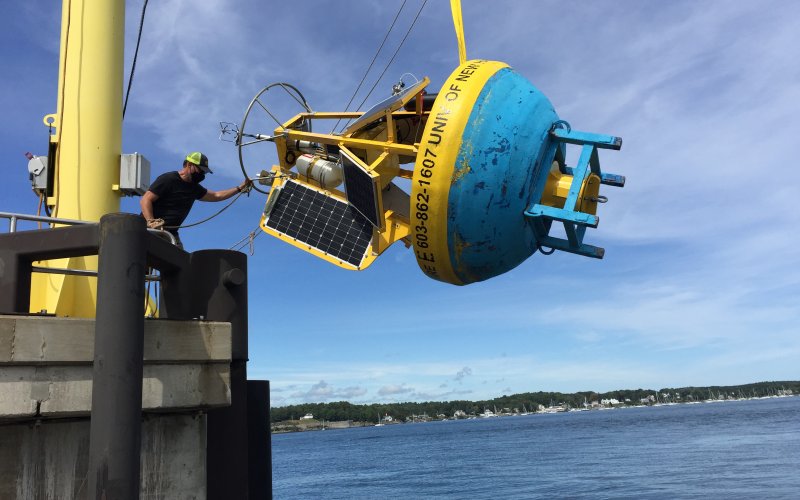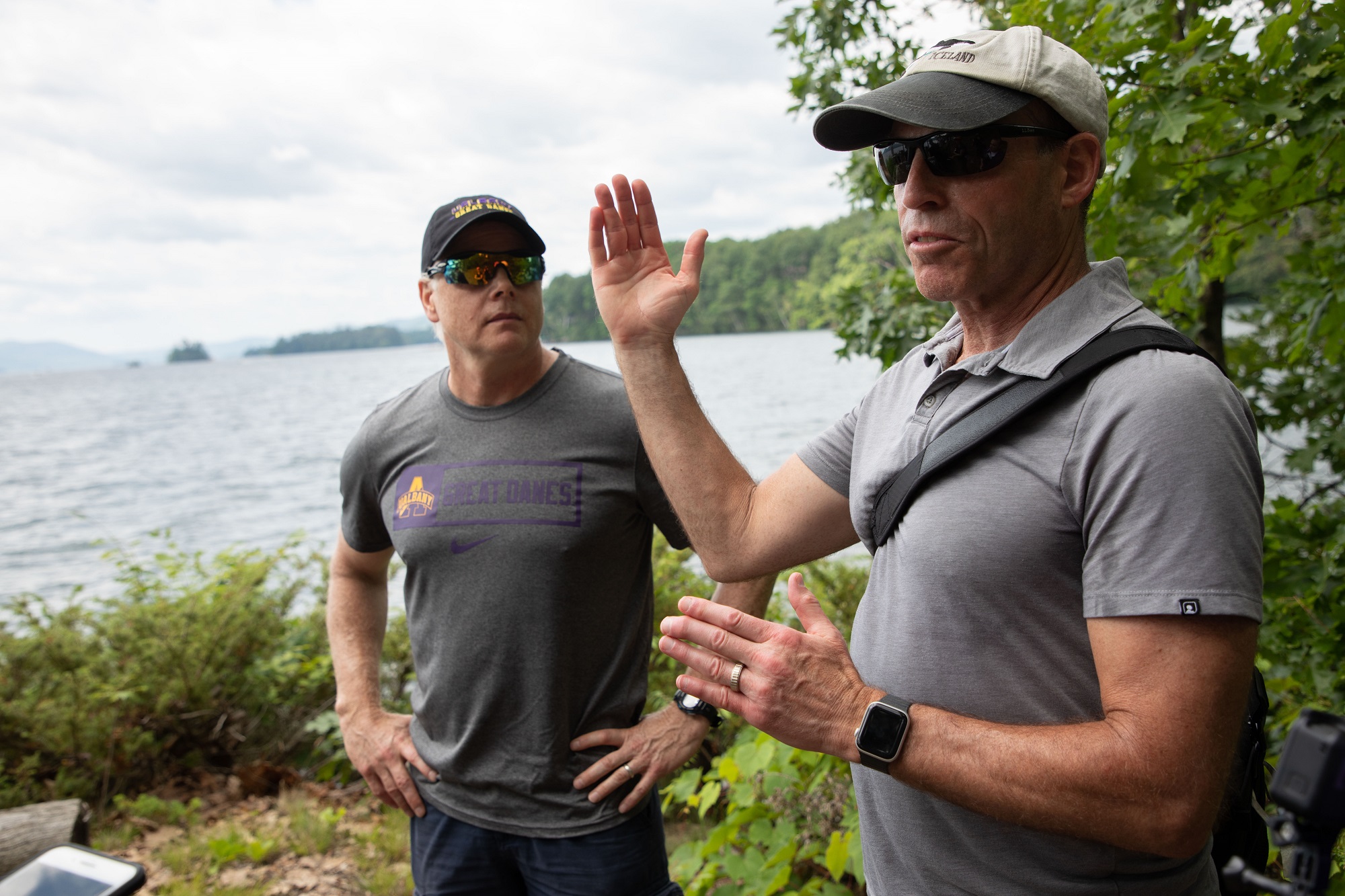UAlbany Atmospheric Scientists Partner on NSF Project to Monitor Atmosphere-Ocean Carbon Dioxide Exchange

By Mike Nolan
ALBANY, N.Y. (Sept. 28, 2023) — Our oceans play an important role in the fight against global climate change. Serving as the planet's greatest carbon sink, oceans absorb about 31 percent of greenhouse gas emissions that are released into the atmosphere, according to a 2019 study published by NOAA.
Carbon dioxide dissolved into the ocean also has a downside, causing seawater to acidify and threatening the health of corals, fish and other marine species.
A collaborative research project co-led by Scott Miller at the University at Albany’s Atmospheric Sciences Research Center (ASRC) could soon offer a new observational tool to improve predictions of the ocean's impact on the carbon cycle, both now and in the future.
The project, a partnership between researchers at ASRC, the University of New Hampshire and Campbell Scientific, an equipment manufacturer, aims to design, install and deploy a new buoy-based sensor package that can monitor air-sea interactions close to the surface, including carbon dioxide exchange.
The four-year, $407,090 project was funded this month by the National Science Foundation.
“To predict how the oceans will impact the carbon cycle, the physical processes describing how CO2 is exchanged across the air-sea interface must be accurately represented in forecast model simulations,” said Miller, a research faculty member at ASRC. “We believe our buoy-based system will be able to offer direct air-sea CO2 measurements over the open water, along with other variables (such as wind and waves) that impact the exchange.”
The CO2 Monitoring Buoy
To monitor air-sea interactions close to the surface, the researchers will be relying on a technique called “eddy covariance” which involves directly measuring updrafts and downdrafts (eddies) in the atmosphere above the sea surface, along with the carbon dioxide that is being transported by each eddy.
By observing the real time buoy data, the researchers can compute the net air-sea exchange of carbon dioxide about every 10-15 minutes.
“Eddy covariance CO2 exchange measurements have been used in land-based environments for well over 30 years,” Miller said. “At sea, however, these measurements are less established because the CO2 signal we are trying to measure is much smaller than over land. There are also other complications, such as platform motion when making measurements over the water.”
The new project will add to a previous award from NSF from 2017-2020 to build a prototype CO2 sensor that can be installed on a buoy and accurately measure the air-sea exchange. The prototype showed encouraging performance, according to Miller.
This next phase will focus on further improving the CO2 sensor, testing the buoy-based measuring system, and ultimately commercializing the product. The research team plans to deploy the sensors for testing in the Gulf of Maine in 2025/26.

“The deployments will first involve outfitting the buoy with all of our sensors and allowing the system to run for a period (days to weeks) at the University of New Hampshire pier to ensure things are operating properly,” Miller said. “Then, we will use a ship to transit the buoy to the Gulf of Maine. Once in the water, buoy measurements will be tracked remotely using a cellular modem.”
“Success in this phase of the project will be to demonstrate further improvements in the CO2 sensor performance, as well as good performance of the overall buoy system. We anticipate the sensor package will be close to the commercialization stage by the end of the project.”
Measuring Air-Sea Interaction
Miller’s research is focused on surface exchange processes, or the way that heat, momentum and trace gases, such as carbon dioxide, are transferred between Earth's surface and the atmosphere.
Along with the NSF project, Miller is partnering with researchers at ASRC on another collaborative project funded by the U.S. Department of Energy that aims to create a buoy-based flux measurement package. The new measurement package, when combined with DOE’s existing floating lidar system, can monitor offshore wind conditions from sea surface to heights of several hundred meters in the atmosphere, where the next generation of wind turbines will operate. The data can be used to improve forecast models for renewable energy generation.
“ASRC has a long history of applying state-of-the-art technology in field research settings,” said Miller. “Much of the methodology that is being used in both of these projects is similar, even though the objectives are different.”
Other collaborators on the NSF project include Doug Vandemark, a research professor at the University of New Hampshire, and research scientists in his lab. UAlbany field and lab technicians, along with undergraduate and graduate students from the Departments of Atmospheric and Environmental Sciences and Electrical & Computer Engineering are also supporting the project.




